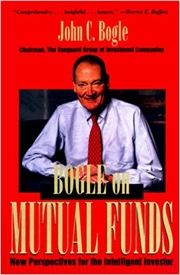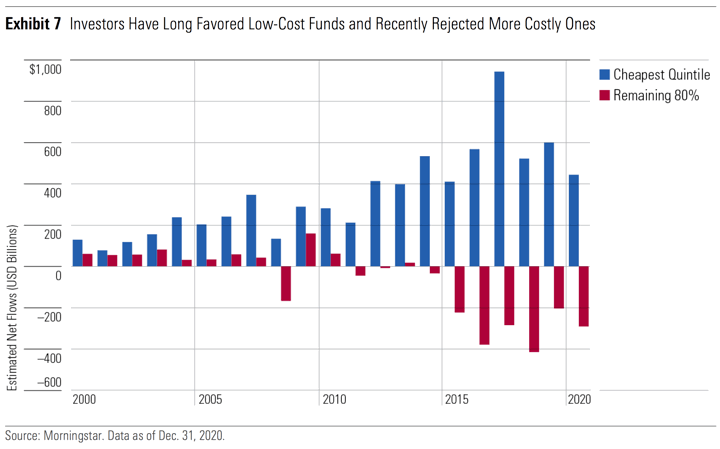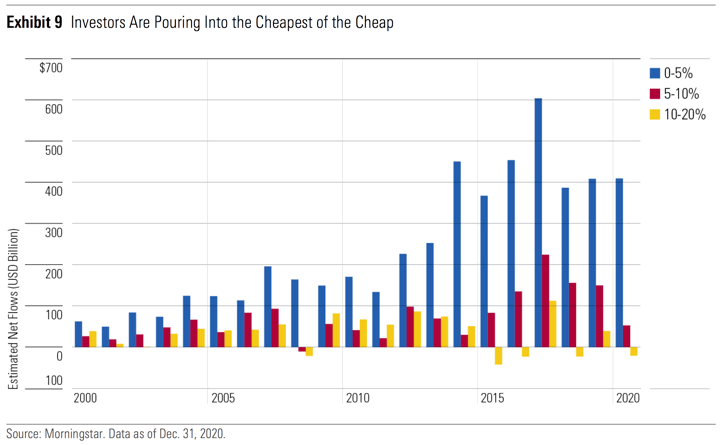 Just over 45 years ago on August 31st, 1976, the late Jack Bogle started the first index mutual fund at Vanguard. It nearly didn’t get off the ground, garnering only 7% of the initial funding goal – it wasn’t even enough to buy shares of all the stocks in the S&P 500! Read Bogle’s own take from exactly 10 years ago at this 9/3/2011 WSJ article to better appreciate it took determination and stubbornness to make this happen.
Just over 45 years ago on August 31st, 1976, the late Jack Bogle started the first index mutual fund at Vanguard. It nearly didn’t get off the ground, garnering only 7% of the initial funding goal – it wasn’t even enough to buy shares of all the stocks in the S&P 500! Read Bogle’s own take from exactly 10 years ago at this 9/3/2011 WSJ article to better appreciate it took determination and stubbornness to make this happen.
Industry leaders mocked “Bogle’s folly”, wondering aloud why anyone would voluntarily agree to be “just average”. Well, Bogle had common sense and simple math on his side. He knew that over time, his fund was guaranteed to be above average due to it’s low costs. Some active mutual funds would outperform for a while, sure, but would there be reliable persistence in those superior returns? It turns out, very little. These days, people worry more about too much index fund investment.
Over time, more and more investors have realized the power of low costs. They are running away from high-cost funds. Morningstar just released it 2020 U.S. Fund Fee Study (free with registration). From the Executive Summary:
The average expense ratio paid by fund investors is half of what it was two decades ago. Between 2000 and 2020, the asset-weighted average fee fell to 0.41% from 0.93%. Investors have saved billions as a result.
(Thank you, Mr. Bogle.)
This chart shows the new investments flows into the cheapest 20% of funds (blue) against the remaining 80% (red) over the last 20 years:

Morningstar research has demonstrated that fees are a reliable predictor of future returns. Low-cost funds generally have greater odds of surviving and outperforming their more-expensive peers. […] Since 2000, net flows into funds charging fees that rank within the cheapest 20% of their Morningstar Category group have trended higher. Flows for the remaining 80% of funds have been negative in nine of the past 10 years.
Vanguard and it’s dirt-cheap index clones are winning. If you look closer, it’s the really low-cost funds that are gathering the most new investment. These are mostly the big names that have started competing directly with Vanguard on cost – iShares, Schwab, Fidelity, SPDR.

Of the $445 billion that flowed into the cheapest 20% of funds and share classes in 2020, nearly all of it went into the cheapest of the cheap, as 93% of net new money flowed into the least costly 5% of all funds.
Investors voted with their money. Follow this trend and continue to effect change with your investment choices. Look for a low-cost fund option in your 401k, and ask why if you don’t see it.
 The Best Credit Card Bonus Offers – October 2024
The Best Credit Card Bonus Offers – October 2024 Big List of Free Stocks from Brokerage Apps
Big List of Free Stocks from Brokerage Apps Best Interest Rates on Cash - October 2024
Best Interest Rates on Cash - October 2024 Free Credit Scores x 3 + Free Credit Monitoring
Free Credit Scores x 3 + Free Credit Monitoring Best No Fee 0% APR Balance Transfer Offers
Best No Fee 0% APR Balance Transfer Offers Little-Known Cellular Data Plans That Can Save Big Money
Little-Known Cellular Data Plans That Can Save Big Money How To Haggle Your Cable or Direct TV Bill
How To Haggle Your Cable or Direct TV Bill Big List of Free Consumer Data Reports (Credit, Rent, Work)
Big List of Free Consumer Data Reports (Credit, Rent, Work)
Speak Your Mind